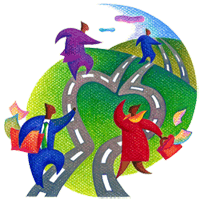When we think about religion we have to go beyond. We have to realize how important is religion not only in a personal level but also in a business level.
Now days, we are facing societies which are centered in productive business organizations. In order to survive to this and be successful it is important to have into account that we are going to deal with different lifestyles that have to adapt to globalization.
It is important of being aware of restrictions and regulations also of imposes and requirements of the different cultures around the world, and the most important being respectful.
As Andrew Wicks says: it is critical to understand the role of religion in the workplace and mostly if you are a leader, because there are a lot of different people operating in different corporations around the world, so it is really important if you know how to behave and how you are going to manage your employees or your colleges, in order to inspire them and try to get from them as much as possible for the successful of the company.






